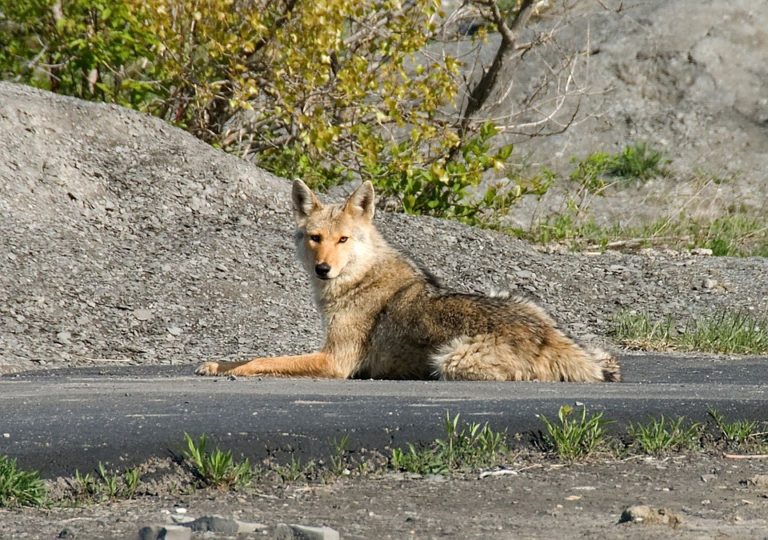Coyotes are coming closer to suburban and urban neighborhoods across America. With their habitats shrinking, they are moving closer to us and if given the chance, they could hurt a dog or cat.
Here at MedVet, we see small dogs that come in through the emergency department having suffered a coyote attack. Often, these patients require immediate surgery to treat their life-threatening injuries.
Understanding the Life and Habits of Coyotes
First, let’s understand the coyote’s lifestyle, habits, and behavior. Coyotes are usually grayish-brown to yellowish-gray and often have a white or buff chest. They can dramatically vary in size from 20-50 pounds. Coyotes often travel in packs of around six but hunt in pairs. They live in burrows and are primarily nocturnal, but can be seen occasionally during daytime hours.
Coyotes are opportunistic, versatile feeders, and omnivorous, but mostly carnivorous. They are wild creatures that primarily feed on small mammals (mice, rabbits, and squirrels), lizards, deer, insects, and birds. They also eat fruits, vegetables, and human trash. Small dogs and cats are often targeted by them in more urban areas. Coyotes have been known to shadow human joggers or larger dogs.
Coyotes will shift their hunting techniques depending on the prey they are hunting. Their techniques primarily include stalking and pouncing or running their prey into another pack member. Attacks on humans are uncommon and rarely cause serious injury, but small children are at significantly greater risk.
How to Protect Your Dog and Cat from Coyotes
Here are some things you can do to protect your dogs, cats, and family members from a coyote attack:
- Always accompany your small dog outside when it’s time for them to use the restroom, especially at dusk, dawn, and night.
- Keep your cats inside at night.
- Supervise small children while they are outside.
- Walk your dog in an area that’s well lit.
- Avoid walking near the edge of the woods at night and be sure to carry a flashlight.
- Secure garbage cans with locking lids or store in a garage or shed.
- If possible, consider a six-foot fence around your yard as coyotes will be slowed by needing to climb the fence. Dog doors and electric fences are wonderful but offer no protection from predators.
- Do not leave pet food sitting outside in bags or leave food in pet bowls.
What to Do if You Are Approached by a Single Coyote
- Maintain eye contact while slowly backing away. Never turn your back on the coyote.
- Make yourself look as large and imposing as possible and raise your arms or backpack above your head.
- Shout or yell to frighten the coyote.
- Throw sticks or rocks to scare away a coyote.
- Do not look afraid or scared as they can read your body language indicating that you are being submissive.
- Shine a flashlight in their eyes if it is nighttime.
- If you are with a small child, place them behind you as you back away and do not allow them to run away from you.
- Know there is likely a second coyote lurking nearby, and be wary.
What to Do When Approached by a Pack of Coyotes
- Do not approach a pack of coyotes.
- Do not act in a threatening manner or stare into their eyes. Note this is different than if approached by a single coyote.
- Shout or yell to frighten the coyotes.
- Throw sticks or rocks to scare away coyotes.
We hope these tips help keep you, your family and your pets safe.
If your dog or cat is attacked by a coyote and your family veterinarian is not available, you can bring your pet to the MedVet location closest to you.


